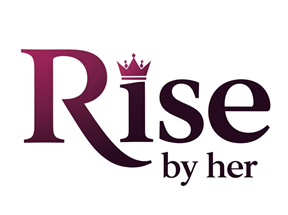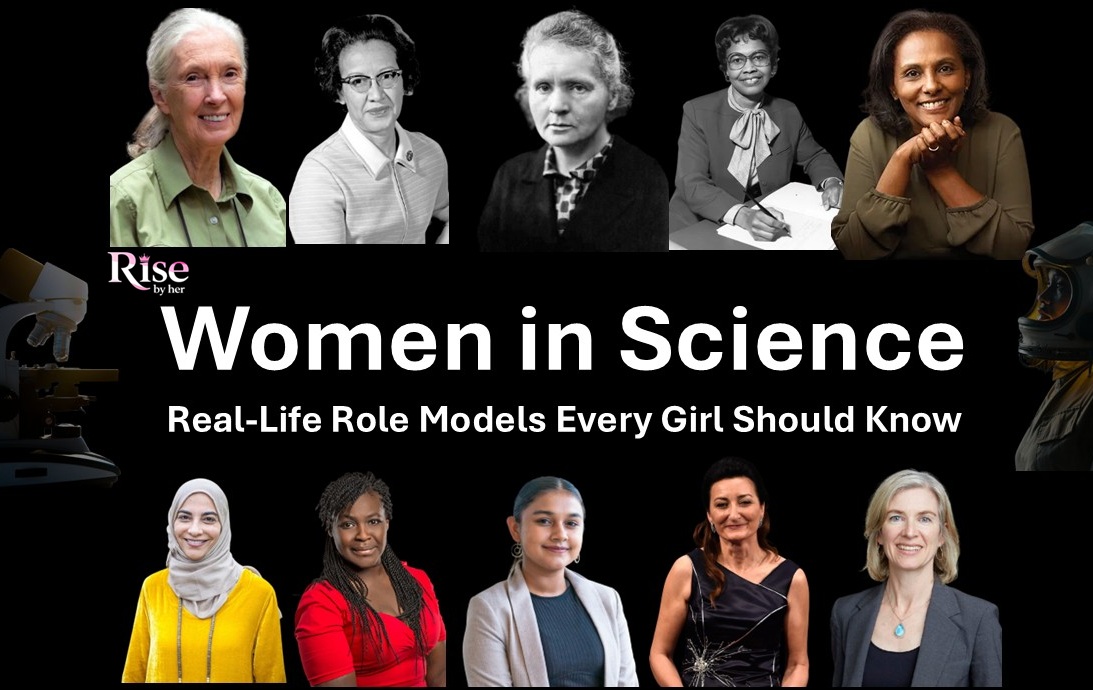Despite progress over the years, science still has a gender gap. In many fields-from physics to engineering, women remain underrepresented, often facing barriers their male counterparts never encounter. This isn’t just a pipeline problem. It’s also a visibility problem.
When girls don’t see women thriving in science, they’re less likely to imagine themselves doing the same. Female scientists serve as powerful role models, not just because of their groundbreaking discoveries, but because they show what’s possible. They inspire confidence, curiosity, and a sense of belonging in young girls who might otherwise doubt their place in the lab, the field, or the research center.
Yet, stories of women in science are still missing from textbooks, documentaries, and media headlines. Representation isn’t just about fairness, it’s about fueling the next generation of thinkers, problem-solvers, and inventors.
Let’s meet the trailblazers who broke barriers, so every girl knows she can build rockets, code the future, and cure diseases too.
The Current State of Women in Science (2025 Snapshot)
While women have made strides in science over the past decade, the gender gap remains noticeable, especially in certain disciplines. Here’s a look at the current landscape.
Women’s Representation in Science Fields
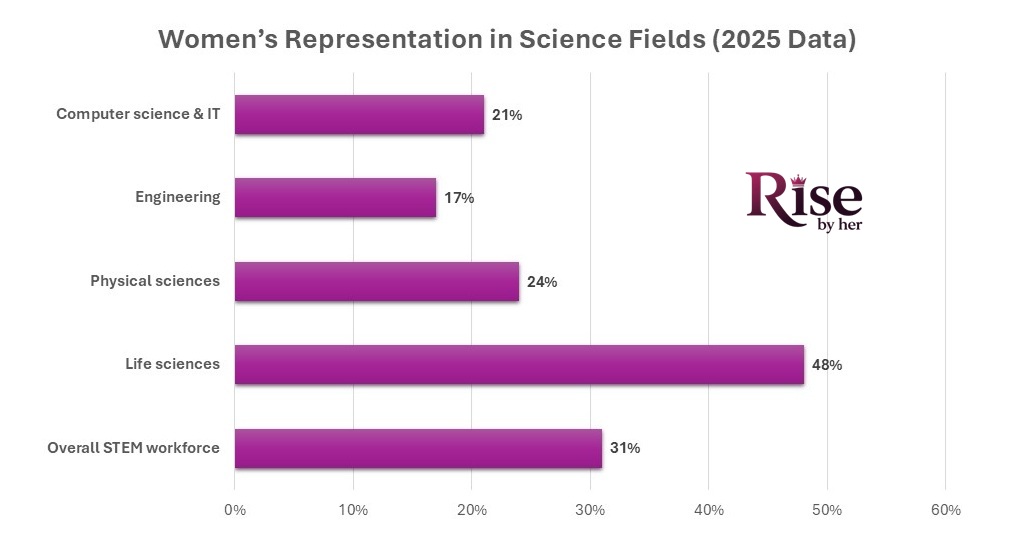
- Overall STEM workforce: Women now make up approximately 31% of the global STEM workforce in 2025.
- Life sciences: Women lead here, making up 48% of biological and biomedical science roles.
- Physical sciences: Still male-dominated but growing, women hold 24% of physics-related positions.
- Engineering: Progress is steady, with women comprising 17% of the global engineering workforce.
- Computer science & IT: Women account for 21% of roles, with major growth in AI and data science roles.
Fields Where Gaps Persist
- Artificial intelligence & machine learning: Women make up only 18% of professionals.
- Academic leadership roles: Women remain underrepresented in senior faculty or dean positions.
- Funding & publishing: Female scientists are less likely to receive high-value grants or be lead authors in top-tier journals.
Positive Trends in 2025
- More girls enroll in science-focused education tracks, thanks to targeted programs in schools and global STEM campaigns.
- Increased funding for women-led research, especially in climate science, health, and sustainable tech.
- More visibility of women in science media, including documentaries, science festivals, and award platforms.
10 Real-Life Role Models in Science Every Girl Should Know
These trailblazing women didn’t just break barriers, they reshaped science. From Nobel laureates to teen inventors, here are 10 inspiring female scientists every young girl should know in 2025.
1. Marie Curie – Poland/France
- Field: Physics & Chemistry
- Achievements: First person to win two Nobel Prizes in two different sciences (Physics and Chemistry).
- Why she’s a role model: Pioneered research on radioactivity despite discrimination.
- Fun fact: Her notebooks are still radioactive over 100 years later.
2. Katherine Johnson – USA
- Field: Mathematics & Space Science
- Achievements: Calculated flight paths for NASA’s Apollo missions.
- Why she’s a role model: Broke racial and gender barriers at NASA during segregation.
- Quote: “Girls are capable of doing everything men are capable of doing.”
3. Dr. Hayat Sindi – Saudi Arabia
- Field: Biotechnology
- Achievements: Co-developed low-cost diagnostic tools for remote communities.
- Why she’s a role model: Advocate for science education in the Arab world.
- Fun fact: She was the first Saudi woman accepted to study biotechnology at Cambridge.
4. Dr. Jane Goodall – UK
- Field: Primatology & Environmental Conservation
- Achievements: World’s leading expert on chimpanzees.
- Why she’s a role model: Revolutionized how we understand animal behavior.
- Quote: “What you do makes a difference, and you have to decide what kind of difference you want to make.”
5. Dr. Gitanjali Rao – USA
- Field: Innovation & Engineering
- Achievements: Invented a lead-detecting device for water at age 12.
- Why she’s a role model: Uses STEM to solve real-world problems as a teen.
- Fun fact: Named TIME’s first “Kid of the Year” in 2020.
6. Dr. Gladys West – USA
- Field: Mathematics & GPS Technology
- Achievements: Developed mathematical modeling that became the foundation of GPS.
- Why she’s a role model: Overcame systemic barriers to impact billions of lives.
- Quote: “I knew I had to do my best.”
7. Dr. Jennifer Doudna – USA
- Field: Biochemistry
- Achievements: Co-inventor of CRISPR gene editing; Nobel Prize in Chemistry.
- Why she’s a role model: Leading voice on ethics in genetic engineering.
- Fun fact: Her inspiration came from reading The Double Helix in high school.
8. Dr. Maggie Aderin-Pocock – UK/Nigeria
- Field: Space Science & Engineering
- Achievements: Hosts BBC’s The Sky at Night, space instrumentation specialist.
- Why she’s a role model: Passionate STEM communicator for kids.
- Quote: “When I look at the moon, I dream.”
9. Dr. May-Britt Moser – Norway
- Field: Neuroscience
- Achievements: Nobel Prize winner for discovering “grid cells” in the brain.
- Why she’s a role model: Role model in brain research and female leadership.
- Fun fact: Shares her Nobel Prize with her former husband, showing the power of collaboration.
10. Dr. Segenet Kelemu – Ethiopia
- Field: Molecular Biology & Agriculture
- Achievements: First African woman to lead an international agricultural research center.
- Why she’s a role model: Champion for women in science and sustainable farming.
- Quote: “Success is meaningless if it doesn’t help lift others.”
How These Role Models Are Inspiring the Next Generation
The visibility of female scientists has a powerful influence on girls’ confidence, academic interests, and career choices. Role models are more than just inspiration, they’re a roadmap to what’s possible.
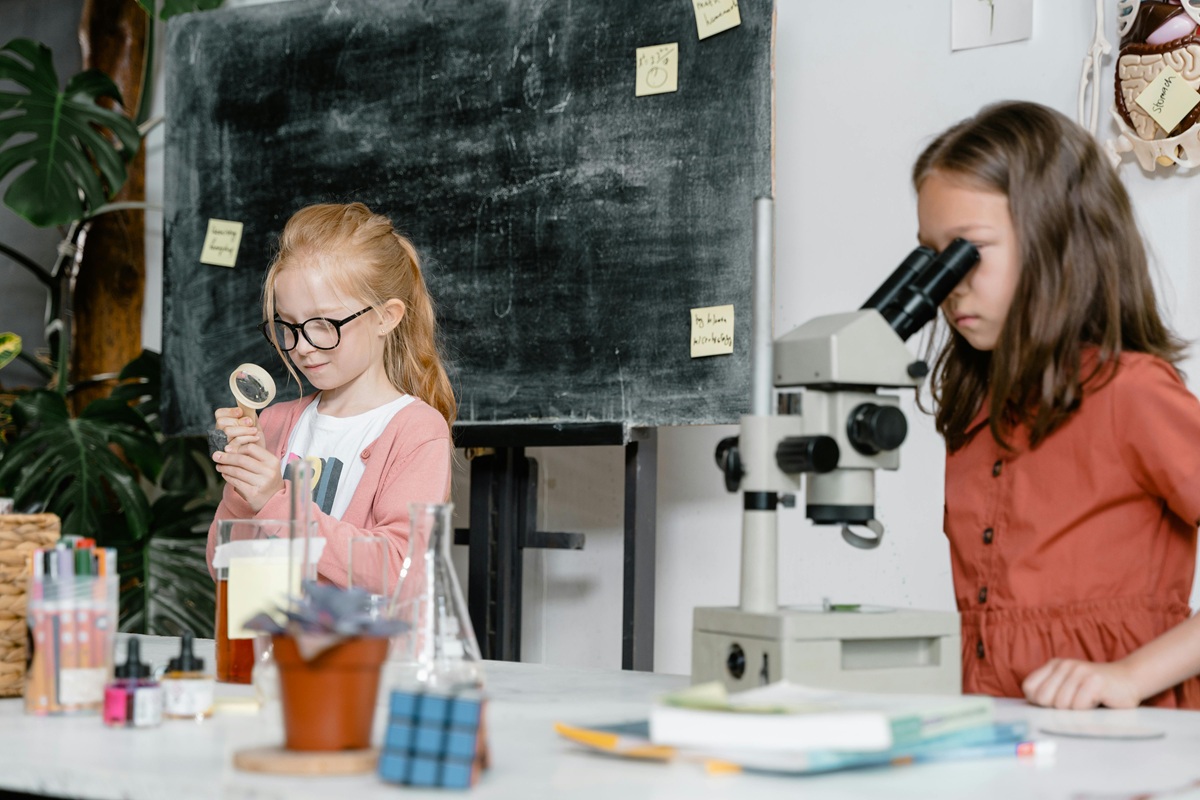
Role Models Are Being Integrated into Education
Teachers and curriculum developers are increasingly showcasing women in science across school subjects to combat outdated gender stereotypes.
- STEM textbooks and lesson plans now include biographies of trailblazers like Marie Curie, Katherine Johnson, and Dr. Jane Goodall.
- The IF/THEN Collection provides free digital assets (videos, photos, and bios) of real women in STEM for classrooms.
- Dr. Gitanjali Rao, named TIME’s Kid of the Year, is frequently used in STEM classes to show what young women can achieve.
“Seeing someone like me in science made me believe I could do it, too.”, A middle school student, IF/THEN STEM Ambassador feedback
Real Girls, Real Impact
Real stories show that representation can directly influence a girl’s path.
- After watching Hidden Figures, countless students have reported feeling empowered to pursue space, math, and engineering careers.
- Dr. Hayat Sindi, a Saudi Arabian scientist, inspires young girls in the Middle East to pursue medical innovation.
- Gitanjali Rao’s outreach workshops on innovation and invention have reached over 50,000 students globally, especially young girls from underserved communities.
Organizations That Amplify Female Scientists’ Stories
Several nonprofits and initiatives are working to ensure these stories reach the next generation:
- IF/THEN® Initiative: Supports women in STEM by increasing visibility in classrooms, museums, and pop culture.
- Girls Who Code: Integrates tech leaders and real-world female coders into its curriculum and campaigns.
- SciGirls (PBS): Features real-life women scientists and engineers in media aimed at middle-school girls.
- AAUW STEM Programs: Fund community-based projects that use role models to teach girls coding, robotics, and physics.
Mentorship and Media Representation Go Hand-in-Hand
Role models aren’t only found in books. Social media, documentaries, and virtual events offer access to inspiring figures from anywhere in the world.
- Instagram and YouTube STEM creators like Dr. Raven Baxter (@RavenTheScienceMaven) connect science with culture and fun.
- Podcasts like Her STEM Story let girls hear directly from scientists who share personal struggles and triumphs.
The Ripple Effect: Long-Term Educational and Career Gains
- According to the National Science Foundation (NSF), exposure to female STEM mentors increases the likelihood of girls enrolling in advanced science courses.
- Girls who have access to role models in STEM are 4x more likely to pursue a career in the field.
Encouragement backed by visibility leads to measurable change, in school performance, self-belief, and STEM enrollment.
Resources to Learn More About Women in Science
Learning about women in science should be as exciting and accessible as possible, especially for kids and teens. Whether it’s through a bedtime story, a Netflix documentary, or a hands-on virtual museum tour, these resources make science relatable, diverse, and inspiring.
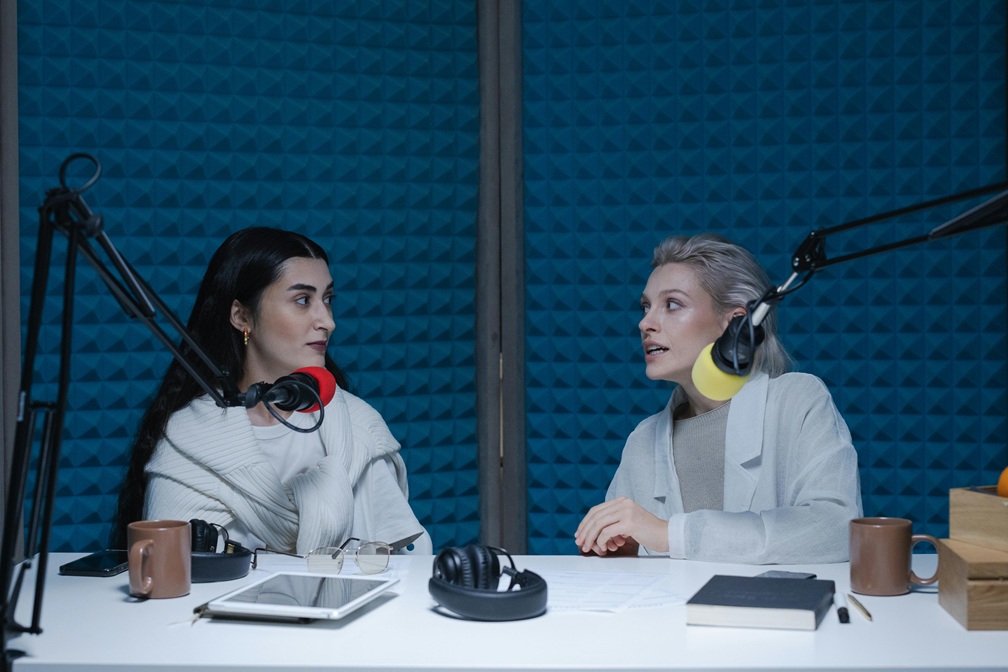
Picture Books & Early Readers
- “Ada Twist, Scientist” by Andrea Beaty – A rhyming tale of a curious girl exploring science from a young age.
- “Mae Among the Stars” by Roda Ahmed – The story of Mae Jemison, the first Black woman in space.
- “The Girl Who Thought in Pictures: The Story of Dr. Temple Grandin” by Julia Finley Mosca – Introduces neurodiversity in STEM through a real-life role model.
Middle Grade & Young Adult Books
- “Women in Science: 50 Fearless Pioneers Who Changed the World” by Rachel Ignotofsky – A beautifully illustrated, best-selling science bio collection.
- “Hidden Figures Young Readers’ Edition” by Margot Lee Shetterly – The inspiring story of NASA’s Black women mathematicians, tailored for kids.
- “Girls Think of Everything” by Catherine Thimmesh – Features women inventors and the problems they solved.
Documentaries & Films
- Picture a Scientist (Netflix): A powerful doc on gender bias in science fields.
- The Mars Generation (Netflix): Spotlights young people, including girls, training for NASA missions.
- Science Fair (Disney+/Hulu): Follows diverse students (many girls) competing in the International Science and Engineering Fair.
TED Talks
- “Science Needs Women”, Talks like this highlight gender equity in science from leading researchers.
- Dr. Gitanjali Rao: A Young Inventor’s Guide to Changing the World – Empowering for kids and teens alike.
Podcasts
- Brains On! A science podcast for curious kids with episodes often featuring women scientists.
- Her STEM Story: Interviews with women in STEM careers and their inspiring journeys.
YouTube Channels
- PBS SciGirls: Focuses on girls solving real-world problems through science.
- Emily’s Wonder Lab: Hosted by Emily Calandrelli, this Netflix series turned YouTube lab makes science fun and accessible.
Interactive Learning Platforms & Virtual Museums
- IF/THEN® Collection: Explore digital biographies and media showcasing real women in STEM.
- Smithsonian’s Women in STEM Virtual Exhibit: A virtual walkthrough of groundbreaking scientists.
- National Geographic Kids: Offers science-based games and stories, including women-focused features.
How to Support Girls Interested in Science
Supporting girls in science doesn’t require a lab coat – just curiosity, encouragement, and the right tools. Whether you’re a parent, teacher, or mentor, small actions can spark big dreams in young minds.
For Parents: Encouragement Starts at Home
- Normalize science conversations at home – Talk about the “why” behind daily phenomena (like why the sky is blue or how plants grow).
- Give science-themed toys and books – Choose STEM kits, microscopes, coding games, or books featuring female scientists.
- Celebrate curiosity, not just correct answers – Let her ask “what if?” without needing the perfect response.
- Watch STEM shows together – Programs like Emily’s Wonder Lab, Ada Twist, Scientist, and SciGirls are fun and empowering.
For Educators: Create Inclusive Classrooms
- Highlight female scientists in the curriculum – Show diverse role models across races, fields, and backgrounds.
- Encourage participation in science fairs and coding clubs – Provide equal access and positive reinforcement.
- Bring in women guest speakers or mentors – Invite female STEM professionals to share real-life stories.
- Foster safe spaces – Girls thrive when classrooms value all voices and discourage gender bias.
Hands-on kits & platforms
- GoldieBlox, KiwiCo, LittleBits, and Thames & Kosmos kits for all ages.
- Tynker and Scratch for beginner-friendly coding fun.
After-school & mentorship programs
Conclusion: Empower the Next Generation
In 2025 and beyond, raising future female scientists means more than encouraging an interest in biology or chemistry, it means building confidence, offering visibility, and creating real access to opportunities.
Girls can’t be what they can’t see. That’s why real-life role models, from Marie Curie to Gitanjali Rao, matter more than ever. When girls see women leading discoveries, launching space missions, or cracking genetic codes, they begin to see what’s possible for themselves.
Every story shared, book read, or experiment done at home or in the classroom plants the seed of potential.
- Visibility inspires ambition.
- Access opens doors.
- Encouragement fuels resilience.
Every girl deserves to grow up knowing there’s a place for her in science, whether she’s building robots, solving climate challenges, or curing disease.

